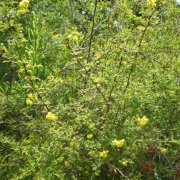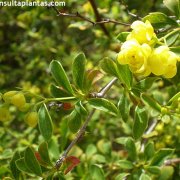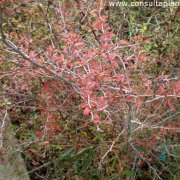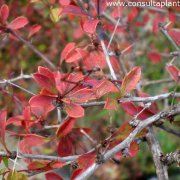Care of the shrub Berberis darwinii or Darwin's barberry |
|
The genus Berberis, family Berberidaceae, comprises 450 species of shrubs native to temperate and subtropical regions of Europe, Asia, Africa, North and South America. Some species are: Berberis darwinii, Berberis vulgaris, Berberis tumbergii, Berberis wilsoniae, Berberis polyantha, Berberis buxifolia, Berberis candidula, Berberis julianae. Common name: Darwin's barberry. This species is native to Chile and Argentina. They are highly branched perennial shrubs that reach 3 meters (9.84 feet) in height. The leaves are leathery, alternate, oblong in shape and have a spiny margin. The showy yellow flowers appear in hanging clusters. They bloom in spring and sometimes in fall as well. They produce small blue-black fruits that are edible. These fast-growing shrubs are used to form hedges, shrub clumps, or as isolated specimens. Berberis darwinii can grow in full sun or semi-shade exposure. They tolerate occasional frosts. Darwin's barberry can grow on light, calcareous or acid soils, and even on clay soils. Water moderately in summer and sparingly the rest of the year. They resist drought very well. Fertilize with compost or manure in the fall. Prune after flowering to control growth and to remove dry branches. Berberis darwinii is a plant that is easy to grow and highly resistant to pests and diseases. Darwin's barberry propagates from cuttings in the fall or spring; reproduction by seeds is a slow process. |
Images of the shrub Berberis darwinii or Darwin's barberry |
Find plants
Berberis darwinii or Darwin's barberry | Care and Growing
© 2025 FavThemes



